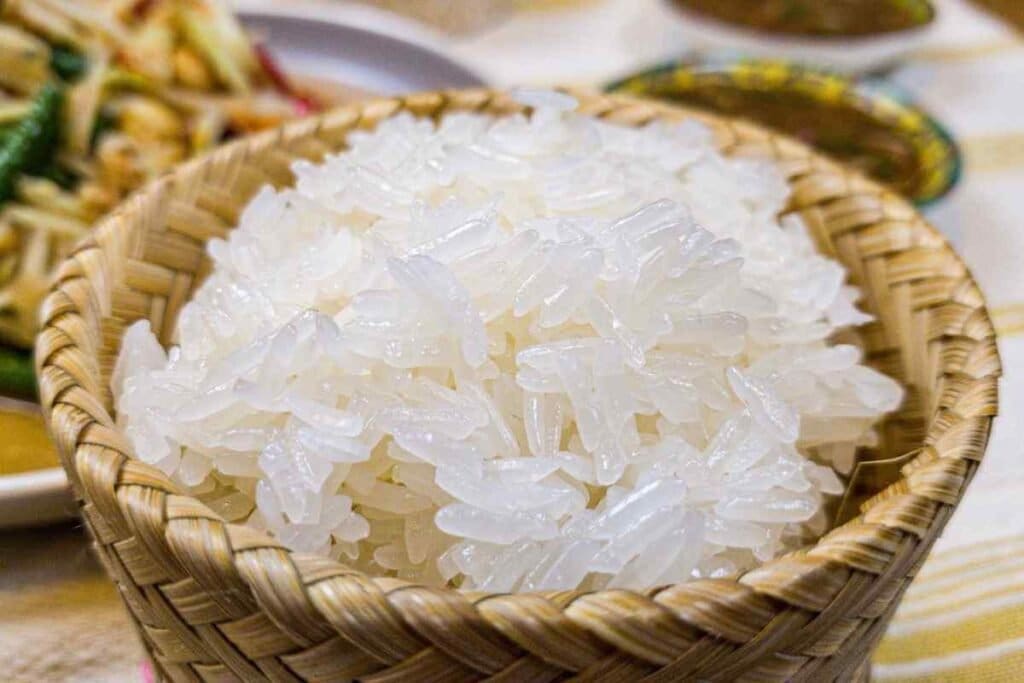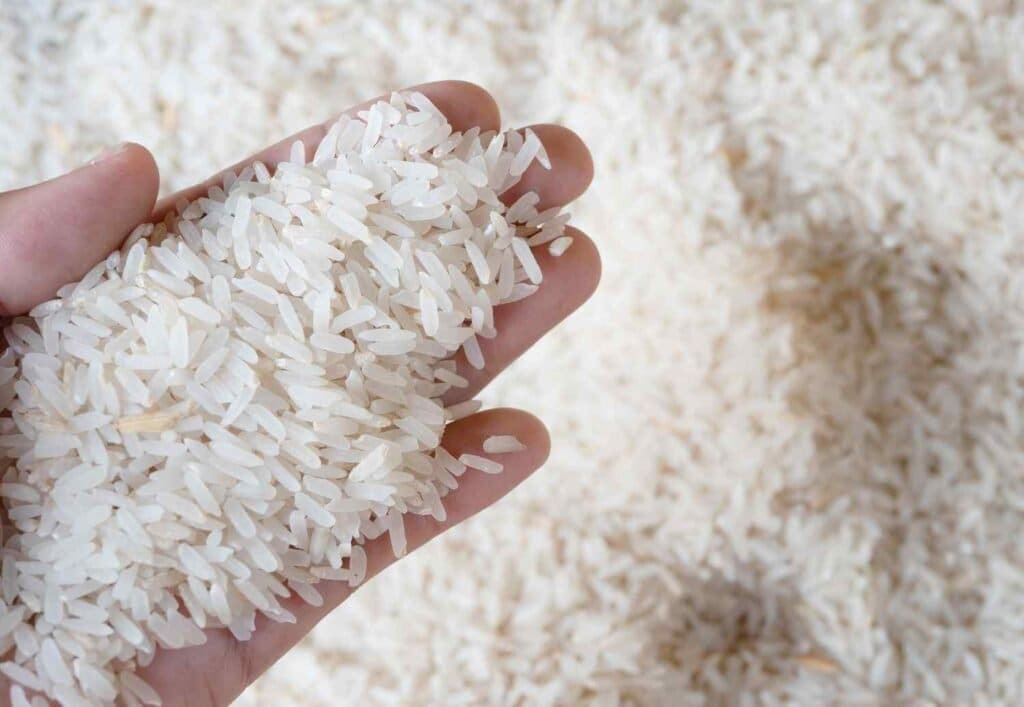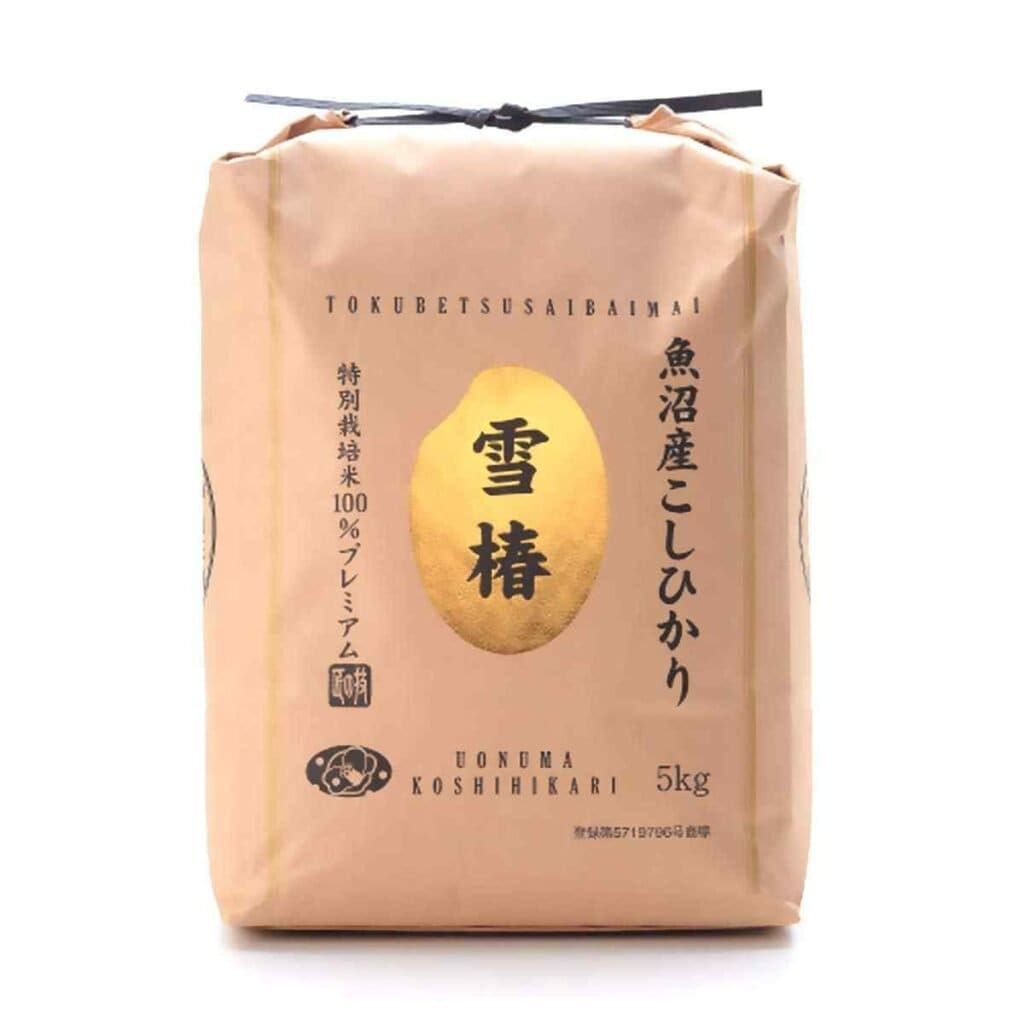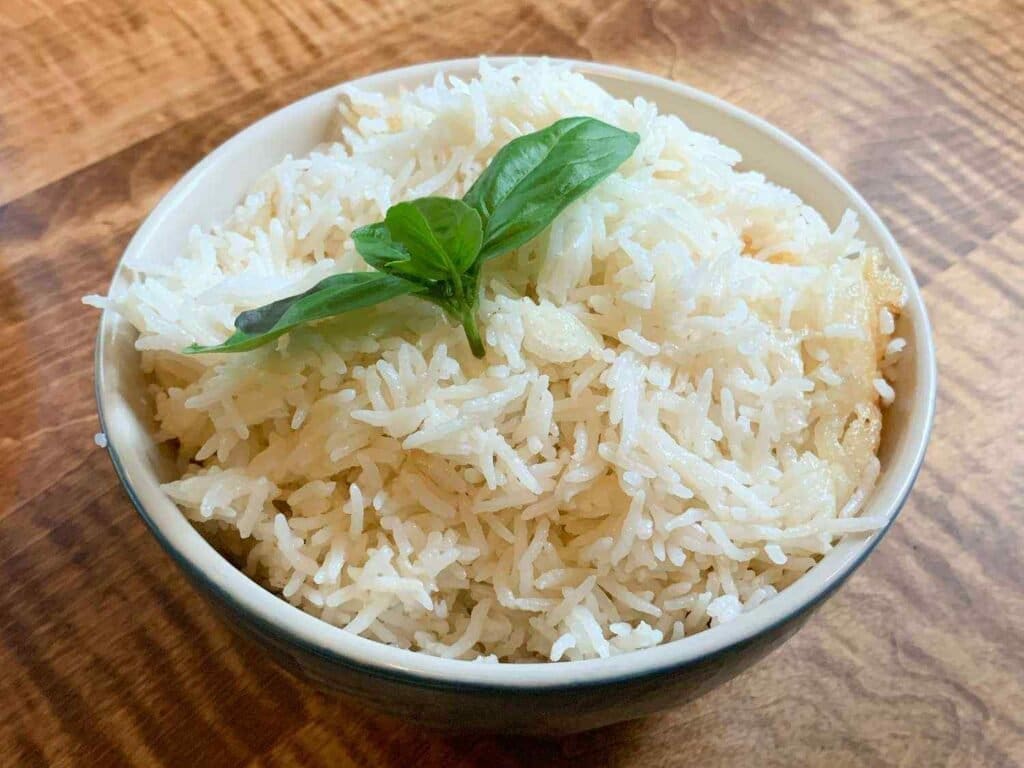Creating the perfect sticky rice starts with choosing the right grain, but with so many options, where do you begin? Our guide to the top 7 rice types ensures you never have to guess again.
You’ll find just the hint you need to pick the star for your next culinary creation. Why does the choice of rice make such a difference? The answer lies within.
1. Glutinous Rice or Sweet Rice

Glutinous rice, also known as sweet rice, is the ideal selection for creating sticky rice due to its naturally sticky texture after cooking. This variety of rice, though its name suggests otherwise, doesn’t contain gluten. Its unique stickiness is attributed to its high amylopectin content.
For those looking to prepare traditional dishes such as Southeast Asian sticky rice or Japanese mochi, this rice should be your first choice. Its grains, which are shorter and rounder than those of other varieties, turn wonderfully chewy and stick together well when cooked correctly.
It’s marketed under various names, including sticky rice and glutinous rice, and comes in both white and black types. Choosing glutinous rice ensures that your culinary efforts yield the authentic texture and flavor essential to traditional sticky rice dishes.
2. Calrose Rice

While not rooted in the same tradition as glutinous rice, Calrose rice emerges as an accessible and multifaceted choice for individuals aiming to craft sticky rice dishes.
This California-born medium-grain rice achieves a tender and slightly adhesive texture upon cooking, positioning it as a prime ingredient for various culinary endeavors, not limited to sticky rice preparations.
Its capability to meld well with diverse flavors makes it a critical inventory item for kitchens. The widespread availability and cost-effectiveness of Calrose rice present a pragmatic option without sacrificing the culinary experience.
Adhering to appropriate washing and cooking methods will enhance its qualities, making your next sticky rice dish memorable.
3. Koshihikari Rice

For those who prioritize the utmost quality in sticky rice, Koshihikari rice is a standout choice, renowned for its unique sweetness and ideal sticky yet tender texture. Here are the key details:
- Origin: Koshihikari was initially grown in Japan, becoming a benchmark for excellence in sticky rice.
- Texture and Flavor: It has a special mix of sweetness and a sticky, tender texture that’s perfect for various culinary uses.
- Cooking: Achieving its best stickiness and flavor involves precise water measurements and cooking times.
- Cost: As a high-end variety, it typically comes with a higher price tag than other rice types, yet its exceptional taste and texture justify the expense for many.
Knowing these points helps appreciate the esteemed status of Koshihikari rice among sticky rice options.
4. Sushi Rice

Sushi rice, meticulously produced from superior Koshihikari or Calihikari types, is designed to achieve an ideal sticky consistency crucial for sushi and a range of other culinary dishes.
This exceptional short-grain rice serves as the foundation of sushi, offering an optimal blend of adhesiveness and taste to enhance the freshness of fish and additional toppings.
When selecting sushi rice, it’s important to choose grains that are polished and seem almost see-through, indicating a high starch content essential for creating cohesive bite-sized pieces.
The proper preparation of sushi rice includes rinsing the grains until the water is clear, followed by cooking and mixing it with a concoction of vinegar, sugar, and salt. This method boosts its innate sweetness and stickiness, making it perfectly suited for sushi rolls, nigiri, and sashimi.
5. Calasparra Rice

Calasparra rice, a multi-functional short-grain variety, shines in recipes that benefit from a sticky consistency, such as paella, due to its exceptional absorbency and tendency to clump. Here are reasons to select it for your next kitchen adventure:
- High Absorbency: It absorbs flavors incredibly well, enriching your meals.
- Clumping Nature: Ideal for sticky rice, its grains adhere to each other while retaining texture.
- Versatility: Beyond paella, it fits seamlessly into numerous dishes that require a sticky consistency.
- Authenticity: Utilizing Calasparra rice brings a genuine touch to traditional recipes, enhancing your culinary creations.
Choose Calasparra rice for its distinctive qualities that guarantee your sticky rice dishes are both flavorful and perfectly textured.
6. Bomba Rice

Exploring Spanish culinary traditions, one discovers Bomba rice, known for its high absorbency and short-grain characteristics, is essential for creating rice dishes where texture and flavor are paramount.
This rice is a cornerstone in combining tradition with culinary innovation, ensuring each mouthful reflects its depth.
| Quality | Description | Impact on Sticky Rice |
|---|---|---|
| Absorbency | High | Guarantees intense flavor |
| Grain Type | Short | Ideal for achieving the desired stickiness |
| Culinary Use | Spanish dishes | Adaptable across various recipes |
Bomba rice’s significance transcends merely binding ingredients; it plays a crucial role in enhancing the core flavors of the dish, establishing itself as an indispensable component in culinary preparations.
Its capacity to soak up flavors while retaining a satisfying texture positions it as a prime selection for those aiming to perfect the creation of sticky rice dishes.
7. Jasmine Rice

While Jasmine Rice isn’t typically the first choice for making sticky rice, with the right technique, you can create a texture ideal for various dishes. Here’s the method to achieve it:
- Rinse Well: Begin by washing your jasmine rice under cold water until it’s clear. This step is crucial for removing excess starch, which otherwise might lead to a too mushy texture.
- Water Ratio: Opt for a slightly more generous amount of water compared to rice than you’d usually do. For jasmine rice, a ratio of 1 ½ cups of water for every 1 cup of rice is recommended.
- Soak: It’s vital to let the rice soak for 20-30 minutes before cooking. This soaking period is key for reaching the sticky texture you’re aiming for.
- Simmer and Steam: Allow the rice to cook on a gentle heat until all the water has been absorbed. After turning off the heat, leave it covered to steam for an additional 10 minutes.



